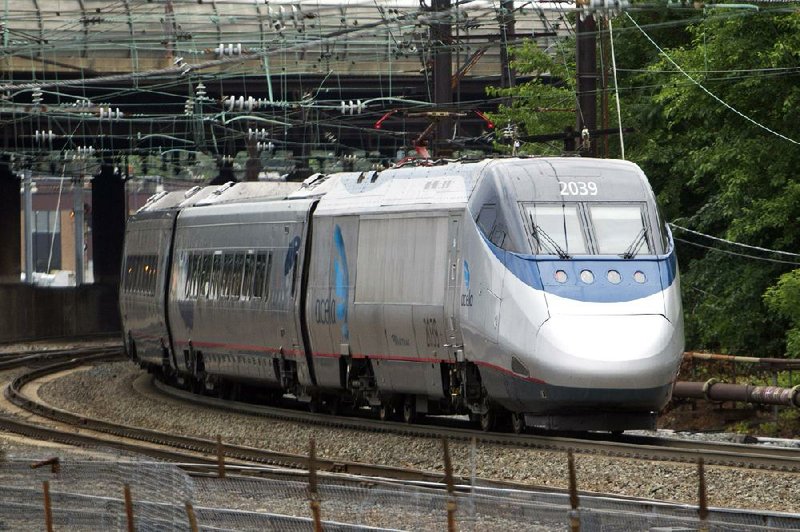LITTLE ROCK — Amtrak’s plan to replace its fleet of Acela trains provides an opportunity for Siemens AG, Mitsubishi Heavy Industries Ltd., Hitachi Ltd. and others who want to compete with Bombardier Inc., the supplier of equipment used since theservice’s start.
“There’s not that many companies that build the trains,” said Andy Kunz, president and chief executive officer of the U.S. High Speed Rail Association, a Washington-based group whose members include Bombardier, Alstom SA, Siemens and Patentes Talgo SA. “But thehandful that there are would all be ready to bid.”
Replacing the Acela, which can operate at speeds of as much as 150 mph, may be Amtrak’s biggest equipment purchase since it bought the original trains in a contract valued at $1.2 billion when signedin 1996. Amtrak doesn’t have a cost estimate because it’s at “the very beginning of this process,” Steve Kulm, a railroad spokesman, said.
Montreal-based Bombardier worked with Alstom, based in Levallois-Perret, France, to build the 20 Acela train sets that consist of locomotives integrated with passenger cars. “We would love to work with Amtrak on their next generation of trains,” said Maryanne Roberts, a Bombardier spokesman.
The 12-year-old Acela, which operates between Washington and Boston, is by far Amtrak’s fastest and most profitable service. It produced about a fourth of the taxpayer-supported railroad’s $2 billion in ticket revenue for the year ended Sept.30. About 3.4 million passengers rode Acela trains during that period.
Amtrak’s decision to buy new trains comes as it develops long-range plans to offer service as fast as 220 mph in the Northeast, an effort it’s said will cost $151 billion. The railroad doubled its share of air-rail travel between New York and Washington, to about 75 percent, between 2000 and 2011 after the Acela was introduced and airport security became more time-consuming after the Sept. 11 terrorist attacks.
In announcing the fleet replacement Thursday, Amtrak said it scrapped a plan to buy 40 Acela passenger cars from Bombardier and lengthen each train set by two cars to increase capacity.
“What we really need to do is replace the Acela with new equipment,” Amtrak Chief Executive Officer Joseph Boardman told a congressional committee in Washington. “I told our folks they need to get this done by the time I’m 70, and I’ll be 64 next year.”
The Washington-based railroad is already buying new equipment for its slower, longdistance train services, replacing cars made as long ago as the 1940s. In July 2010, it announced a $298.1 million contract for 130 passenger cars with the U.S. unit of CAF, based in Gipuzkoa, Spain. Three months later, it said it would spend $466 million on 70 new electric locomotives made by Siemens, based in Munich.
In a fleet plan issued in March, Amtrak estimated the lifespan of Acela trains to be 20 to 25 years.
“By the time they get to be replaced, they’ll be 18 to 20” years old, Kulm, the Amtrakspokesman, said. “It’s not that the equipment is wearing out; it’s that the demand has increased.”
Amtrak gets rid of passenger rail cars too quickly, said Michael Weinman, a chief operating officer at Amtrak in the 1970s. He is managing director of PTSI Transportation, a consultancy based in Rutherford, N.J.
“Only Amtrak insists on retiring cars prematurely, and has gone through 1,000 or 2,000 fine cars, simply scrapping them and never maintaining them,” Weinman said. “This should be considered fiscal imprudence, as they are the stewards of the taxpayer largess which was used to pay for these vehicles.”
Amtrak has continued to work with Bombardier despite a series of mechanical and design failures in the early years of Acela service that embroiled the companies in litigation.
Business, Pages 27 on 12/15/2012

